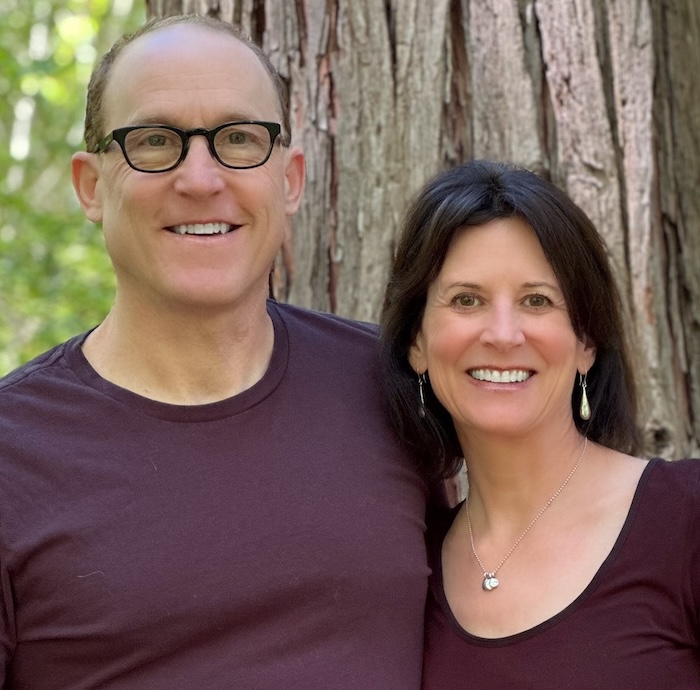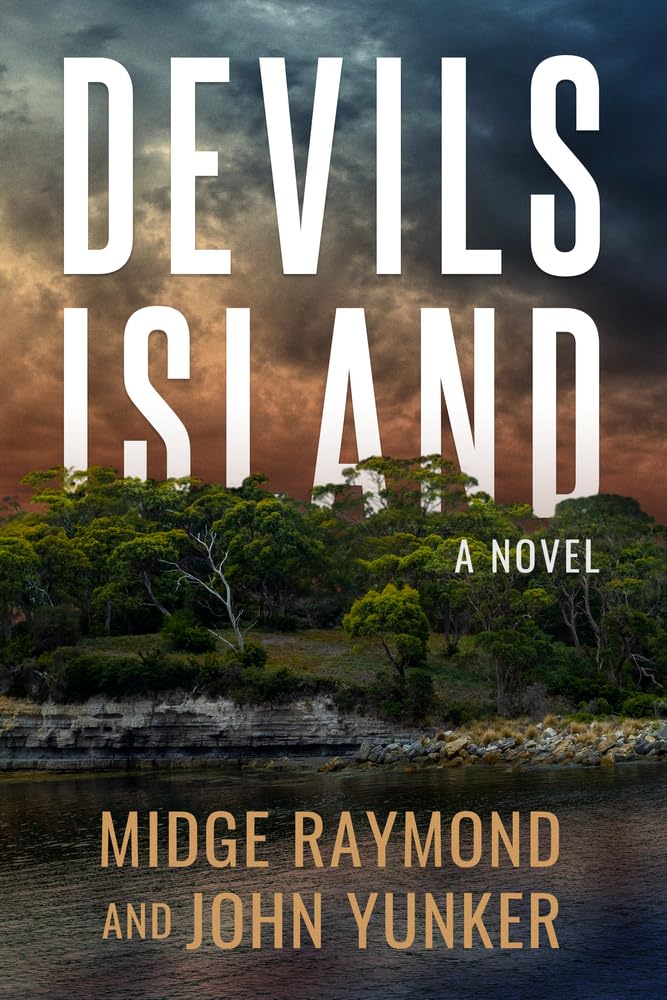
John Yunker & Midge Raymond
Midge Raymond is the author of My Last Continent and the short-story collection Forgetting English. Her writing has appeared in TriQuarterly, Bellevue Literary Review, the Los Angeles Times magazine, Chicago Tribune, Poets & Writers, and other publications. Midge has taught at Boston University, Boston’s Grub Street Writers, Seattle’s Hugo House, and San Diego Writers, Ink. Her novel Floreana, a murder mystery set in the 1930s in the Galápagos Islands, is coming in 2025.
John Yunker is the author of three full-length plays (Paleo, Meat the Parents, and Species of Least Concern), and the novels The Tourist Trail and Where Oceans Hide Their Dead. He is the editor of the Among Animals fiction series as well as the essay collection Writing for Animals and the marketing books Beyond Borders and Think Outside the Country. His plays have been produced by theaters in Florida, Kentucky, Louisiana, Oregon, and Washington DC.
Midge and John are the co-founders of Ashland Creek Press. Devils Island is their first coauthored novel.
EB: How did you come up with the idea for Devils Island?
MR & JY: Several years ago, we traveled to Australia, where we embarked on a four-day, once-in-a-lifetime “glamping” trip on a remote island off the coast of Tasmania. We traveled with two guides and three other couples, most of us strangers to one another. At one point, upon learning John and I were both writers, our companions joked about whether we would one day write about them—and of course, we joked back that we probably would.
And then, not long after we returned, the joke turned into an idea. Although our trip was in all ways just about perfect, John began thinking that the setting (middle of nowhere), the animals (endemic and endangered species), and the island’s history (a former convict settlement that now plays a major role in preserving the endangered Tasmanian devils) provided a dramatic backdrop for a mystery. And so we set out to write one.
EB: I was intrigued by the actors Jane and Brooke and the structure of the story into acts. I know John has written plays, but have either of you acted on stage?
MR & JY: John acted on stage in high school productions, and Midge appeared in a filmed version of one of John’s short plays. Otherwise, our acting has been limited to our book trailer and a PSA about saving typewriters. But of course, by living in Ashland, the theater has naturally found its way into our work.
EB: Brooke and Jane had an odd relationship. How would you characterize it?
MR & JY: At one point Brooke considers that their friendship might be a folie à deux, a type of “shared madness.” Despite being competitive and keeping secrets from each other, they also see the world and understand each other in ways that no one else does. One might characterize their relationship as codependent, and—because they bring out the best, and often the worst, in each other—it’s also quite dramatic.
EB: The characters were quite real to me. Who was your favorite?
 MR & JY: We have a fondness for the naturalist-turned-guide Kerry, who is a firsthand witness to the suffering and possible extinction of the Tasmanian devil. She feels powerless to stop it, no matter how hard she works—and then, when she takes a “break” to lead hikers on this trip, things go terribly awry. So you can’t help but sympathize with her. But then, despite her history and this disastrous camping trip, she discovers the depth of her own strength along the way, and by the end of the journey, things are really looking up for her.
MR & JY: We have a fondness for the naturalist-turned-guide Kerry, who is a firsthand witness to the suffering and possible extinction of the Tasmanian devil. She feels powerless to stop it, no matter how hard she works—and then, when she takes a “break” to lead hikers on this trip, things go terribly awry. So you can’t help but sympathize with her. But then, despite her history and this disastrous camping trip, she discovers the depth of her own strength along the way, and by the end of the journey, things are really looking up for her.
EB: You’ve been to Maria Island, the model for fictional Marbury Island. What was your experience like?
MR & JY: The trip was our first guided, multi-day hike, and we didn’t know what to expect. We chose Maria Island for the wildlife—though we didn’t see the elusive Tasmanian devils, we knew they were around—and we did see wombats, Cape Barren geese, echidnas, wallabies, pademelons, kangaroos, kookaburras, yellow-tailed black cockatoos…and so much more. The hiking and camping itself was smooth sailing, with great companions, guides, and weather. But, being writers, it wasn’t hard to imagine things going terribly wrong—especially in such a remote location.
EB: I have to ask about the writing process. How did that work? Who did what? And were they any places where you couldn’t agree?
MR & JY: John had the idea to set a mystery on a faraway island, and together we brainstormed the story until we had a direction to get us going. Much like the fictional travelers, at first we weren’t quite sure how it would end! John would write a skeletal first draft and pass it along to Midge, who would flesh it out and send it back—and so on, chapter by chapter, until we figured out the ending and finished the first full draft of the book. So in the end, we each wrote and/or revised just about every word.
Regarding disagreements, we certainly had some vivid discussions! But in the end, we always managed to come up with what made sense for the characters and the story. It helps that we were on the same page, so to speak, about the overall story—the themes and characters and tensions. This made it easier to get through some of the details we got stuck on or disagreed on.
EB: Do you have a further fiction collaboration in mind?
MR & JY: We’ve finished another mystery, FIRE SEASON, set in Southern California, about a couple who moves across the country for a fresh start, only to encounter a dead body on a nearby trail who turns out to be someone with connections to long-buried secrets of the past. And we’re also working on another, set in the San Juan Islands in north Washington State, near the Canadian border.
EB: Thanks for talking with us. I really enjoyed Devils Island.
MR & JY: Thank you!

 Follow
Follow